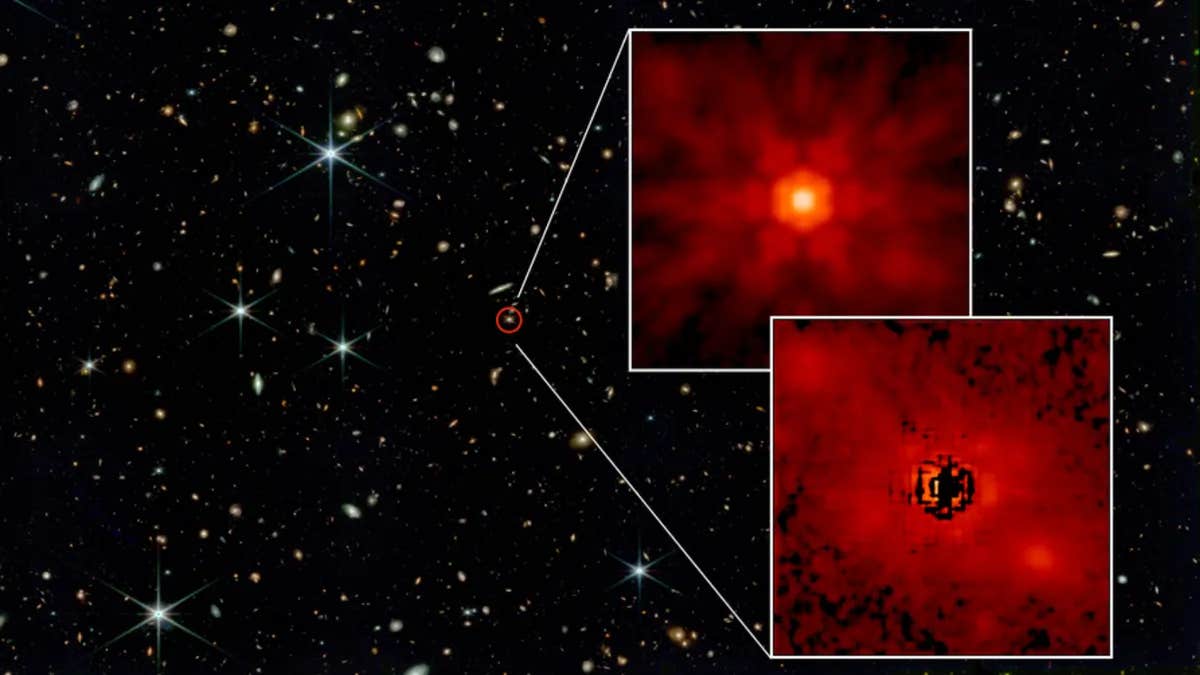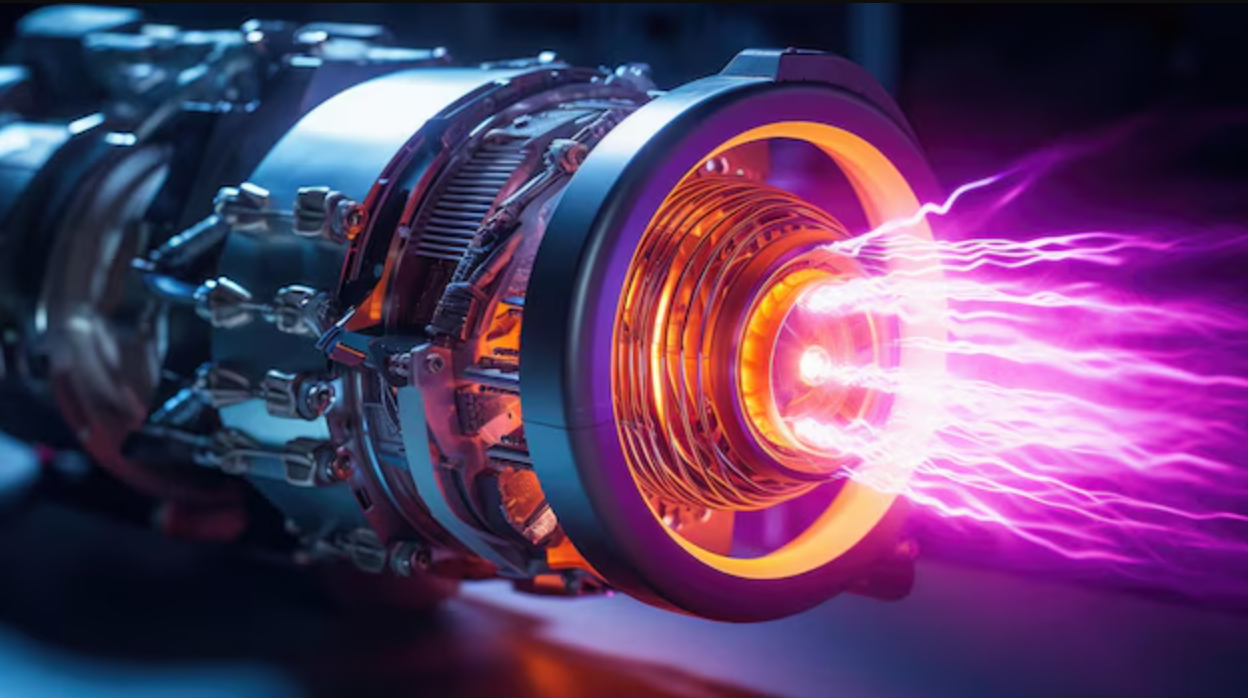Mysterious red objects in space upend current knowledge of galaxies and black holes
Discovery has revealed luminous, extremely red objects that challenge our understanding of galaxy and supermassive black hole formation.

A groundbreaking discovery by NASA's James Webb Space Telescope (JWST) has revealed luminous, extremely red objects that challenge our understanding of galaxy and supermassive black hole formation.
An international team, led by Penn State researchers, used the NIRSpec instrument on JWST as part of the RUBIES survey to identify three mysterious objects in the early universe, approximately 600-800 million years after the Big Bang, when the universe was just 5% of its current age. This discovery, published in Astrophysical Journal Letters, could significantly alter our perception of cosmic evolution.
The team's analysis of spectral measurements, which examine the intensity of different wavelengths of light emitted from objects, found signatures of stars that are hundreds of millions of years old. These "old" stars are far older than expected in such a young universe.
Additionally, the researchers discovered signs of massive supermassive black holes within these objects, estimating them to be 100 to 1,000 times more massive than the supermassive black hole at the center of our Milky Way. Current models of galaxy and supermassive black hole formation do not predict such findings, as they suggest galaxies and their black holes grow together over billions of years.
Bingjie Wang, a postdoctoral scholar at Penn State and lead author of the paper, expressed astonishment at the discovery. “We have confirmed that these appear to be packed with ancient stars — hundreds of millions of years old — in a universe that is only 600-800 million years old. Remarkably, these objects hold the record for the earliest signatures of old starlight. It was totally unexpected to find old stars in a very young universe. The standard models of cosmology and galaxy formation have been incredibly successful, yet these luminous objects do not quite fit comfortably into those theories.”
The researchers first noticed these massive objects in July 2022 when JWST's initial dataset was released. They published a paper in Nature a few months later, announcing the objects' existence.
Initially, the team suspected the objects were galaxies and used spectral analysis to determine their true distances and the sources of their immense light. This further analysis confirmed that the objects were indeed galaxies from the universe's early days. The team also found evidence of surprisingly large supermassive black holes and an unexpectedly old population of stars within these galaxies.
Related Stories
Joel Leja, an assistant professor of astronomy and astrophysics at Penn State and co-author of both papers, shared his bewilderment. “It’s very confusing. You can make this uncomfortably fit in our current model of the universe, but only if we evoke some exotic, insanely rapid formation at the beginning of time. This is, without a doubt, the most peculiar and interesting set of objects I've seen in my career.”
JWST is equipped with infrared-sensing instruments capable of detecting light emitted by the oldest stars and galaxies. This capability allows scientists to look back in time nearly 13.5 billion years, close to the universe's beginning. However, analyzing ancient light poses challenges, as it can be difficult to distinguish between different types of objects that might have emitted the light.
In these early objects, characteristics of both supermassive black holes and old stars are evident. However, Wang noted that it is not yet clear how much of the observed light comes from each source. This ambiguity leaves room for interpretation, suggesting these could be early galaxies that are unexpectedly old and massive or more typical galaxies with "overmassive" black holes, significantly larger than would be expected today.
“Distinguishing between light from material falling into a black hole and light emitted from stars in these tiny, distant objects is challenging,” Wang explained. “That inability to tell the difference in the current dataset leaves ample room for interpretation of these intriguing objects. Honestly, it’s thrilling to have so much of this mystery left to figure out.”
If part of the light is from supermassive black holes, these black holes are not typical. They emit far more ultraviolet photons than expected, and similar objects studied with other instruments lack the usual signatures of supermassive black holes, such as hot dust and bright X-ray emission. The most surprising aspect, according to the researchers, is the massive size of these black holes.
“Normally, supermassive black holes are paired with galaxies,” Leja said. “They grow up together and go through all their major life experiences together. But here, we have a fully formed adult black hole living inside of what should be a baby galaxy. That doesn't really make sense because these things should grow together, or at least that’s what we thought.”
The researchers were also puzzled by the incredibly small sizes of these systems, which are only a few hundred light-years across, roughly 1,000 times smaller than the Milky Way. Despite their small size, these systems contain as many stars as the Milky Way, with estimates ranging from 10 billion to 1 trillion stars.
If the Milky Way were compressed to the size of these galaxies, the nearest star would almost be within our solar system. The Milky Way's supermassive black hole, located about 26,000 light-years away, would only be about 26 light-years away and visible in the sky as a giant pillar of light.
“These early galaxies would be so dense with stars — stars that must have formed in a way we've never seen, under conditions we would never expect during a period in which we’d never expect to see them,” Leja said. “And for whatever reason, the universe stopped making objects like these after just a couple of billion years. They are unique to the early universe.”
The researchers aim to conduct more observations to uncover the mysteries of these objects. They plan to take deeper spectra by pointing JWST at the objects for longer periods, which will help distinguish the light emitted by stars from that of the potential supermassive black hole by identifying specific absorption signatures present in each.
“There's another way that we could have a breakthrough, and that's just the right idea,” Leja said. “We have all these puzzle pieces and they only fit if we ignore the fact that some of them are breaking. This problem is amenable to a stroke of genius that has so far eluded us, all of our collaborators, and the entire scientific community.”
Wang and Leja's research received funding from NASA’s General Observers program and support from the International Space Science Institute in Bern.
Note: Materials provided above by The Brighter Side of News. Content may be edited for style and length.
Like these kind of feel good stories? Get the Brighter Side of News' newsletter.
Joseph Shavit
Head Science News Writer | Communicating Innovation & Discovery
Based in Los Angeles, Joseph Shavit is an accomplished science journalist, head science news writer and co-founder at The Brighter Side of News, where he translates cutting-edge discoveries into compelling stories for a broad audience. With a strong background spanning science, business, product management, media leadership, and entrepreneurship, Joseph brings a unique perspective to science communication. His expertise allows him to uncover the intersection of technological advancements and market potential, shedding light on how groundbreaking research evolves into transformative products and industries.



